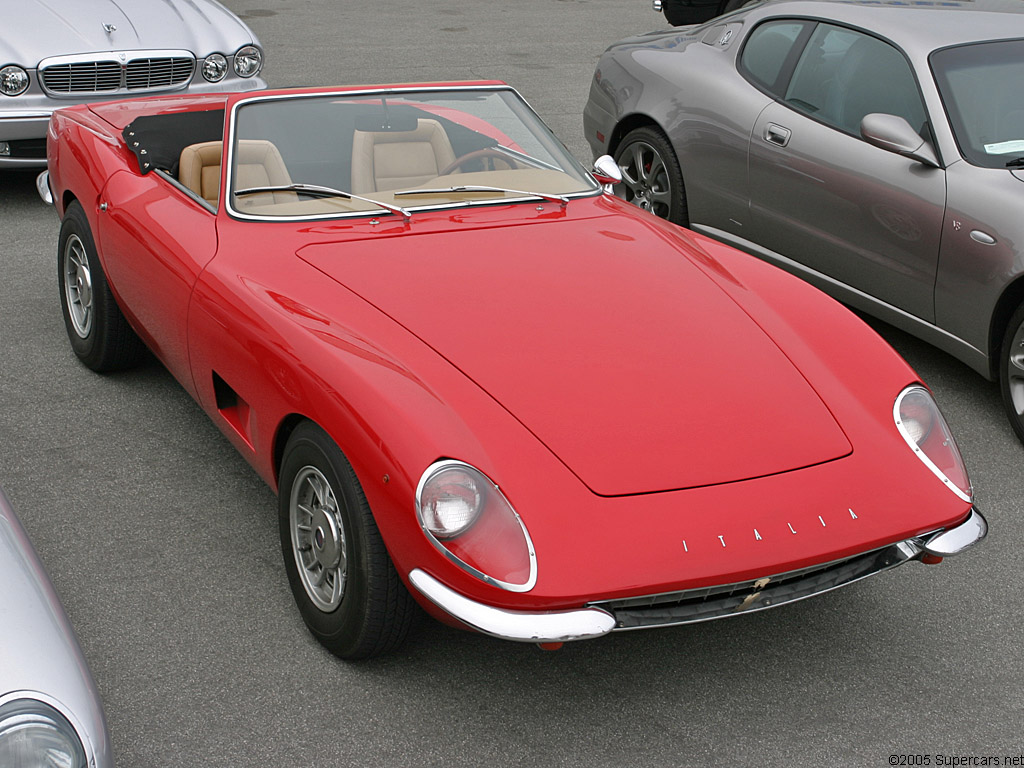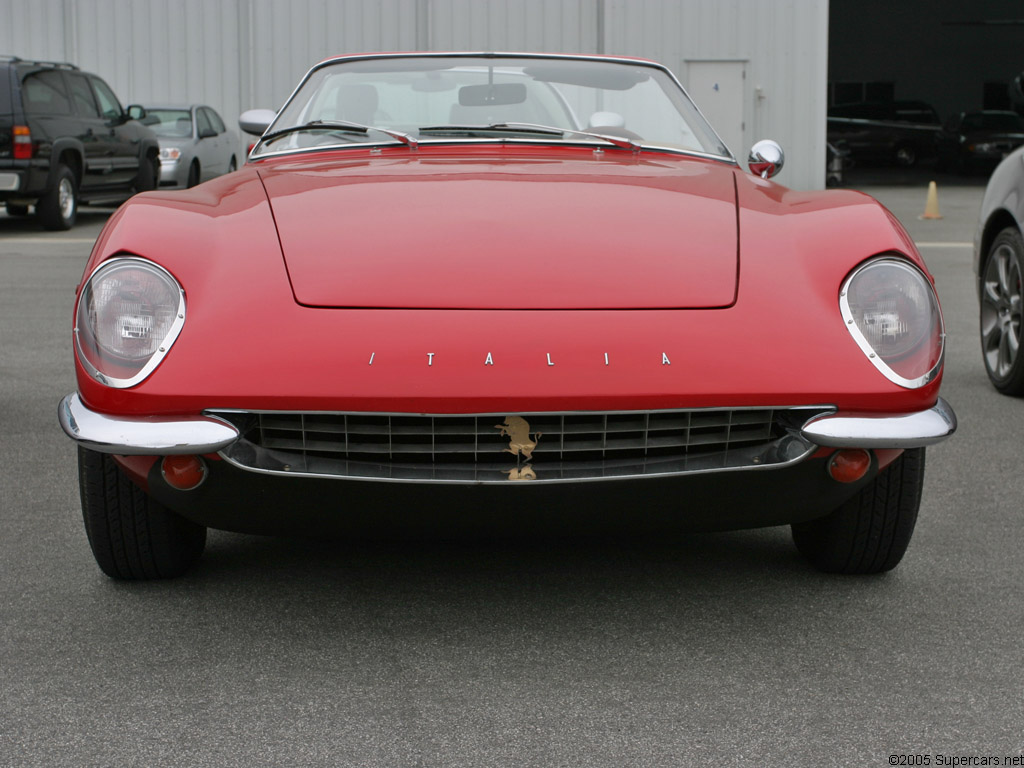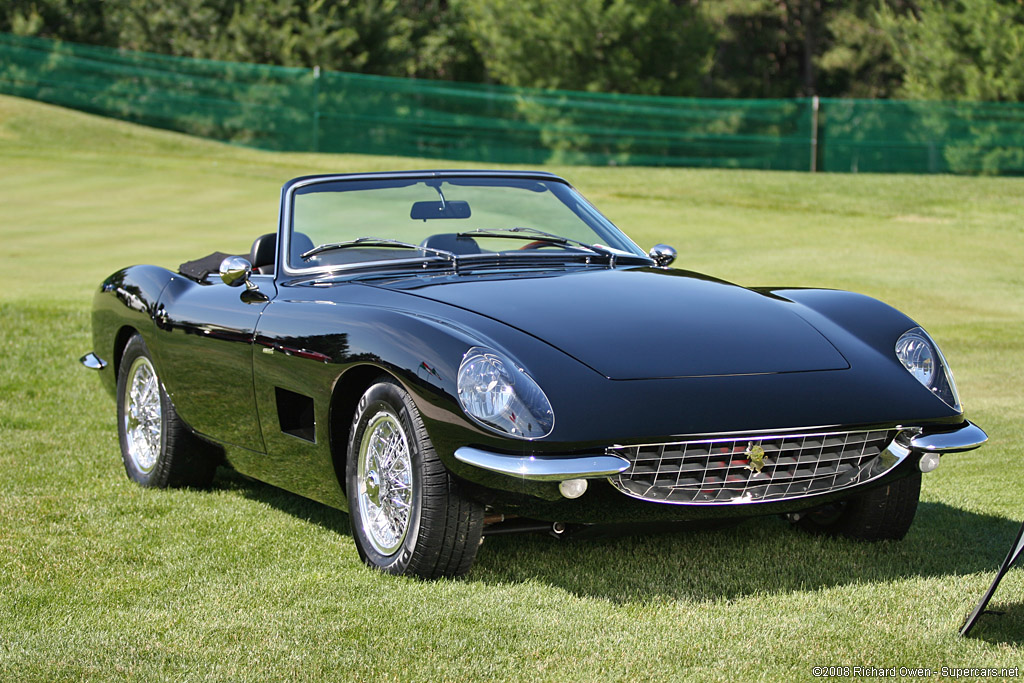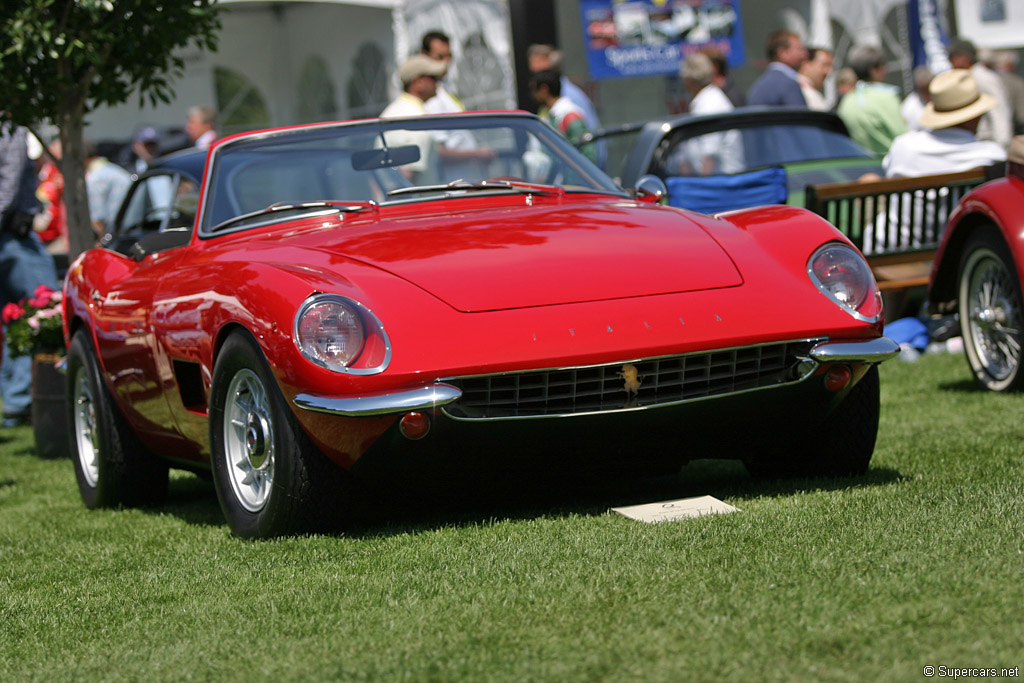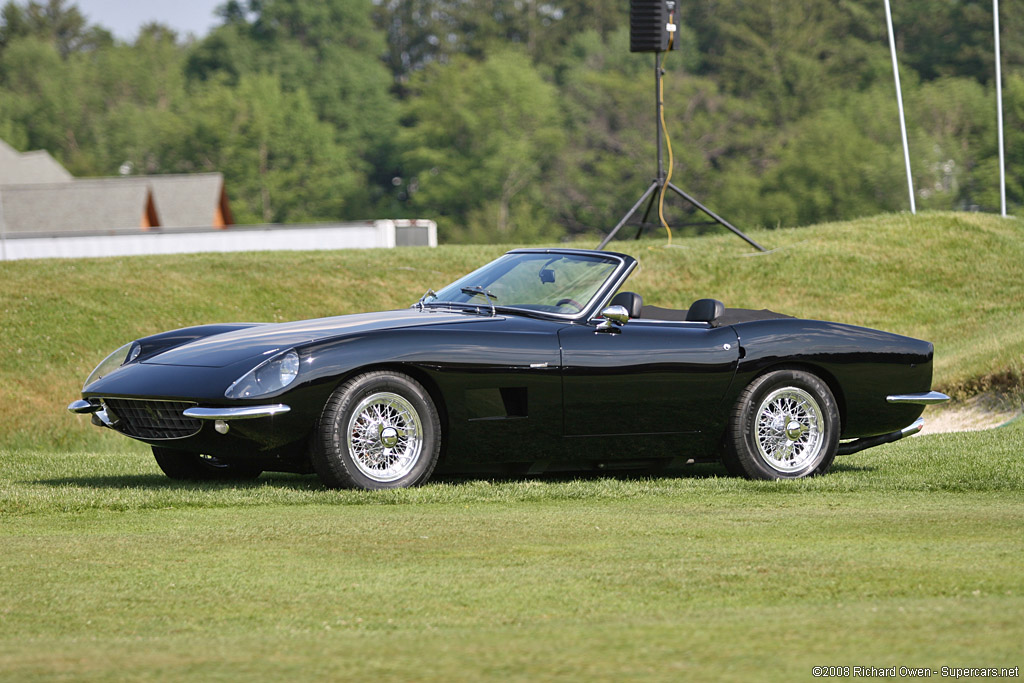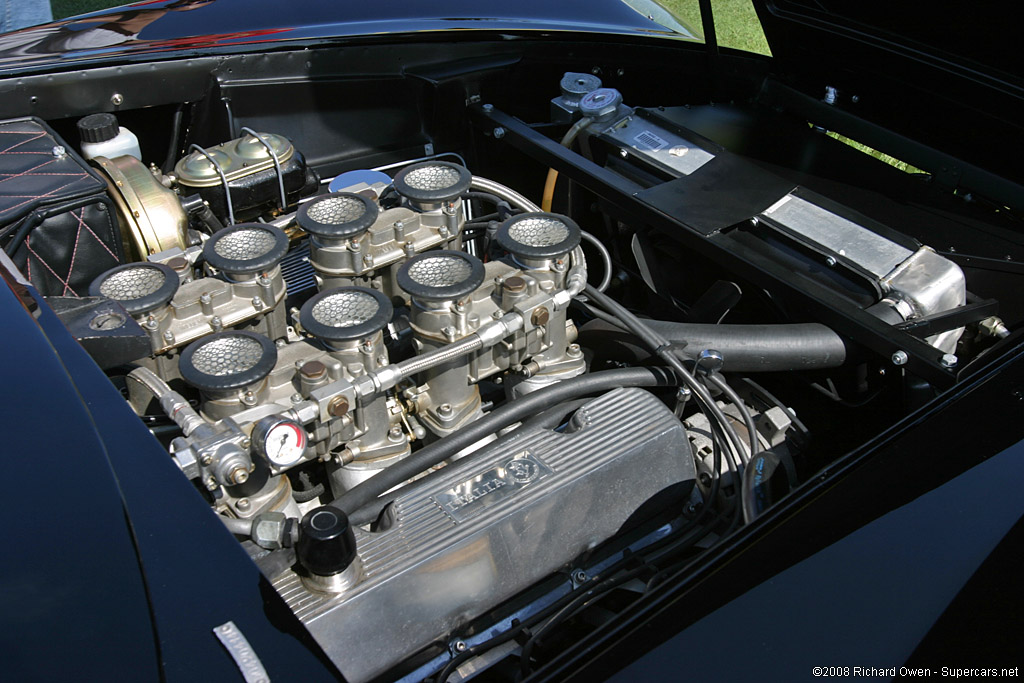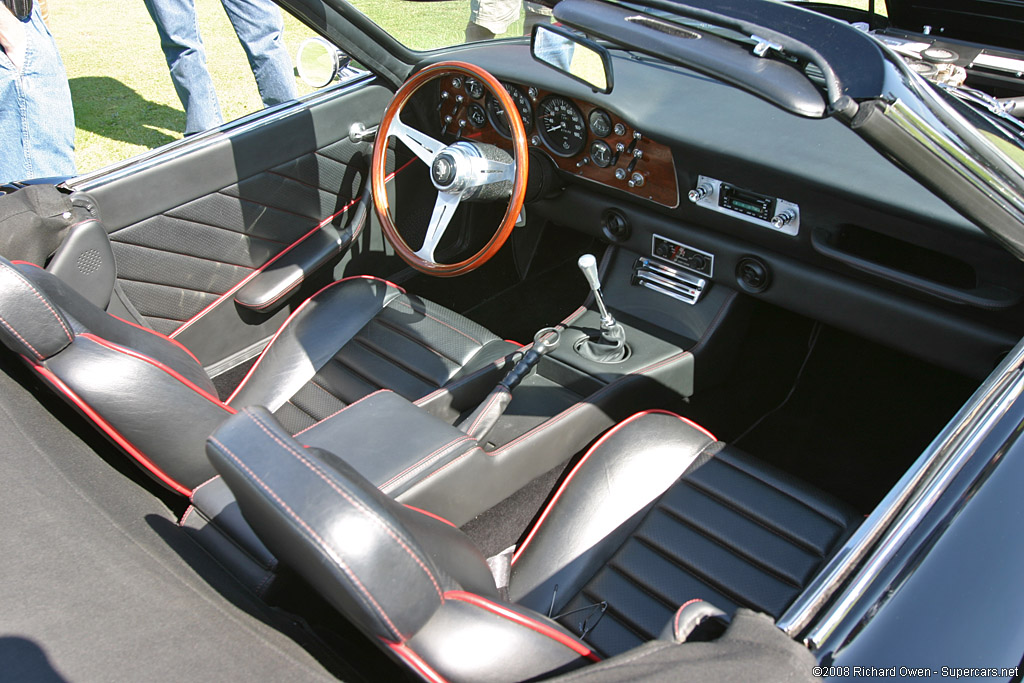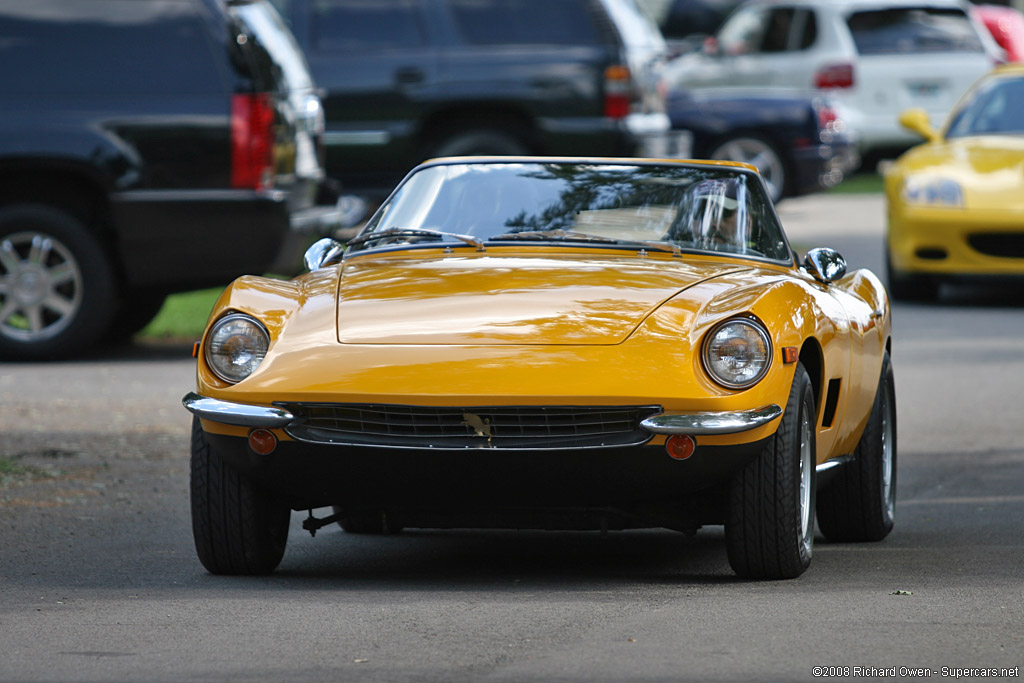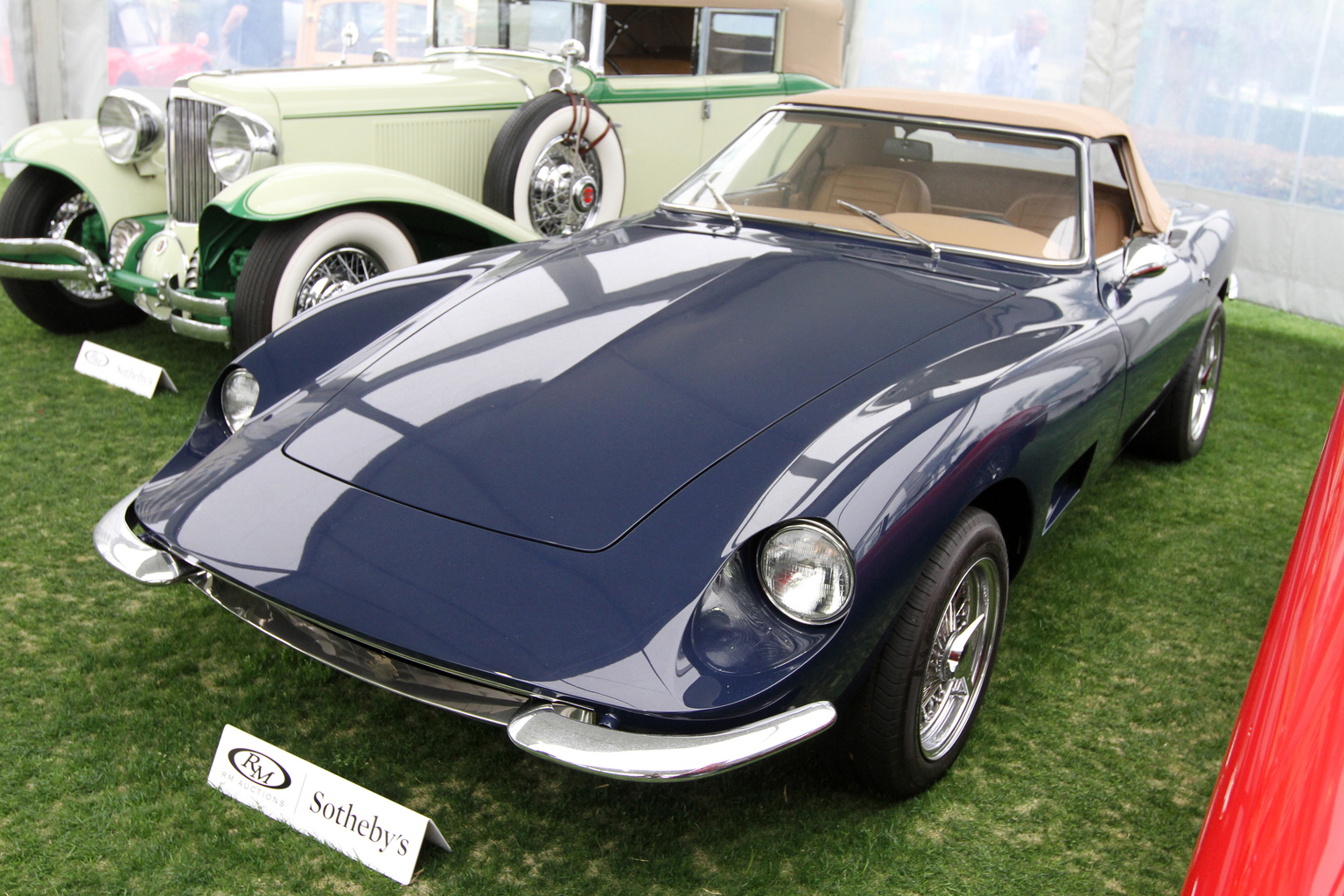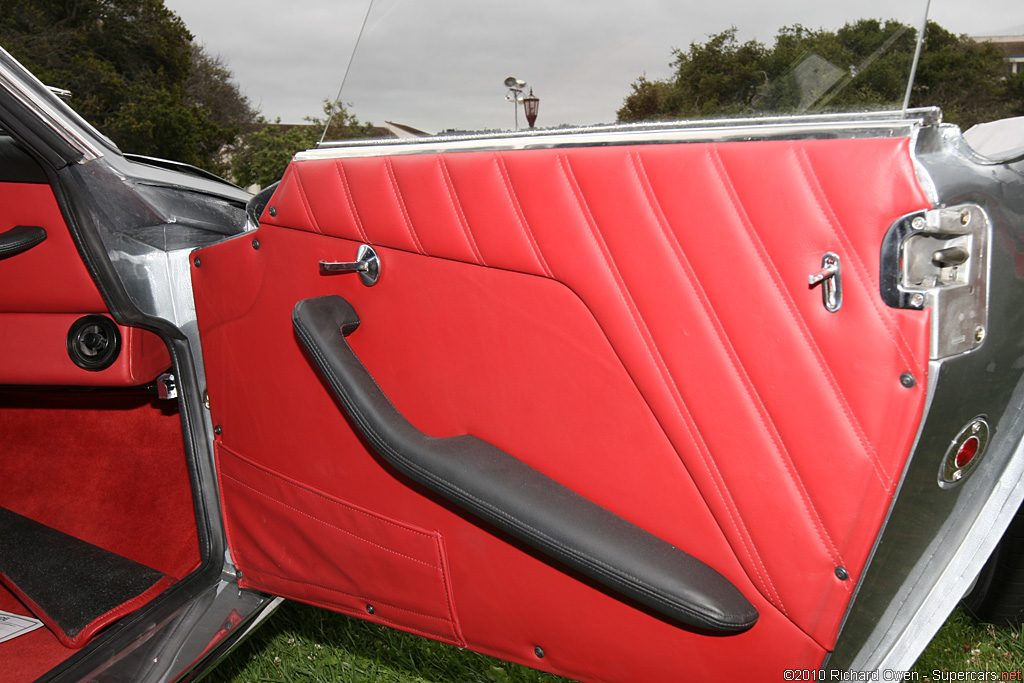1968 Intermeccanica Italia Spyder
In 1967, Frank and Paula Reisner formed Intermeccanica in Turin and began manufacturing the Italia Spyder. Production began after a long series of events including name, ownership and engineering changes. This can probably explain why the Italian-American hybrid isn’t more well known, but does little to hide the car’s Italian flair and V8 performance.
They story starts with Jack Griffith of New York who was stuffing Ford V8s into small TVR chassis. The resulting performance was tremendous, but not enough to keep the idea afloat. Eventually English chassis production ran dry so he turned to Frank Reisner of Intermeccanica, who had also produced the Apollo GT, to make a chassis and body for his next car.
Designed by Bob Cumberford, the next Griffith was more bespoke with a custom chassis and interior. The first Griffith GT appeared at the 1965 New York Auto show, but that wasn’t soon enough to save Griffith’s enterprise. Almost as fast as the 2,250 body order was made, Griffith’s company folded, leaving Intermeccanica with expensive tooling and rigs. The shells that did shipped to America were finished by Steve Wilder at Holman and Moody.
This left Intermeccanica with no choice but to produce the car on their own terms and in Italy. They found a US distributor, Genser-Foreman who made some promotional material, calling the car a Genser-Foreman Experimental or GFX. By the time Ford had agreed and started shipping Mustang engines, transmissions, rear axles, and Magnum 500 wheels to Torino, Italy, the name changed again to Torino. This was quickly overturned by Ford themselves so, Frank Reisner chose Italia, and put added the script across the nose of the car to avoid further confusion.
Through all its names and owners the Italia was a proper Italian-American hybrid that lived up to the original design theme initially set out by Jack Griffith. Like the Monteverdis, Isos, ACs and DeTomasos, it used a large American V8 in a European-manufactured body and chassis.
John Crosthwaite at Intermeccanica had to design the chassis from scratch, using parts from various European manufacturers. The engineering was fairly straight forward, using square tubes to form an independent chassis which was welded directly to the body. The company boasted: ‘welded into a single rattle-free unit’. The front was suspended by unequal wishbones and a Mustang live axle was mounted in the rear with coil springs and radius rods.
Ford initially shipped the 4.7 liter engine, but that grew to 5.0 liters and settled on the 5.7-liter Cleveland 351 V8. The later provided great power for the car and helped it reach 60 mph in less that 6.5 seconds.
The Italia’s body was hand-formed over wooden bucks and made of steel. Franco Scaglione was brought in to modify the design and create a spyder variant. He added small bumperettes and updated the shape. The gorgeously-styled spyder far outsold its coupe counterpart and became the best selling of all the Intermeccanica models. It had styling cues from the Ferrari 365 2+2 and maybe the 250 GT Nembo Spyder.
Under 600 Italias were made from 1967 until 1973. Eventually Intermeccanica switched production to the Indra with backing from Opel. This replacement used Opel’s Chrysler V8 and an Opel Diplomat suspension. Shortly afterwards Intermeccanica migrated to Canada to resume their business making replica Porsches.
Intermeccanica Italia Spyder Gallery
See full Intermeccanica Italia Spyder Gallery here
In Detail
| price $ | $7995 USD |
| engine | Ford 351 Cleveland V8 |
| position | Front Longitudinal |
| aspiration | Natural |
| valvetrain | Pushrod OHV, 2 Valvbes per Cyl |
| fuel feed | 4-Throat Autolite Carburetor |
| displacement | 5752 cc / 351 in³ |
| bore | 101.6 mm / 4.00 in |
| stroke | 88.9 mm / 3.50 in |
| compression | 10.7:1 |
| power | 231.2 kw / 310 bhp @ 4800 rpm |
| specific output | 53.89 bhp per litre |
| bhp/weight | 231.69 bhp per tonne |
| torque | 521.99 nm / 385 ft lbs @ 3200 rpm |
| body / frame | Unit Steel |
| driven wheels | RWD |
| front tires | Dunlop 185HR14 |
| rear tires | Dunlop 185HR14 |
| front brakes | Discs w/Power Assist |
| rear brakes | Discs w/Power Assist |
| front wheels | F 35.6 x 15.2 cm / 14 x 6.0 in |
| rear wheels | R 35.6 x 15.2 cm / 14 x 6.0 in |
| steering | Unassited Rack & Pinion |
| f suspension | Indpendant w/Coil Springs, Telescopic Shock Absorbers, Anti-Roll Bar |
| r suspension | Trailing Arms w/Panhard Rod, Coil Springs, Telescopic Shock Absorbers, Anti-Roll Bar |
| curb weight | 1338 kg / 2950 lbs |
| wheelbase | 2400 mm / 94.5 in |
| front track | 1499 mm / 59 in |
| rear track | 1499 mm / 59 in |
| length | 4445 mm / 175 in |
| width | 1727 mm / 68 in |
| height | 1181 mm / 46.5 in |
| transmission | Ford T10 4-Speed Manual |
| final drive | 3.00:1 |
| top speed | ~217.3 kph / 135 mph |
| 0 – 60 mph | ~6.4 seconds |
| 0 – 100 mph | ~16.0 seconds |
Sources & Further Reading
Mattes, John. Italian-American with an identity crisis. AutoWeek. April 24, 1984.
Auction Sales History
1968 Intermeccanica Italia Spyder 50049 – sold for $181,500 Single ownership since 1978. Comprehensive restoration, including a mechanical rebuild. Shown at the Meadow Brook Concours d’Elegance in 2010. A brilliant example of a rare Italian sports car. Auction Source: 2015 Amelia Island by RM Sotheby’s
1972 Intermeccanica Italia Spyder – sold for $143,000 The 1972 Intermeccanica Italia Spyder offered here is potentially the best of the breed. Subjected to a thorough rotisserie restoration that exceeded $100,000 and was just completed in 2009, its condition reflects the research conducted and close attention paid to ensuring correct detailing throughout. Auction Source: RM Auctions’ 2010 Sports & Classics of Monterey



